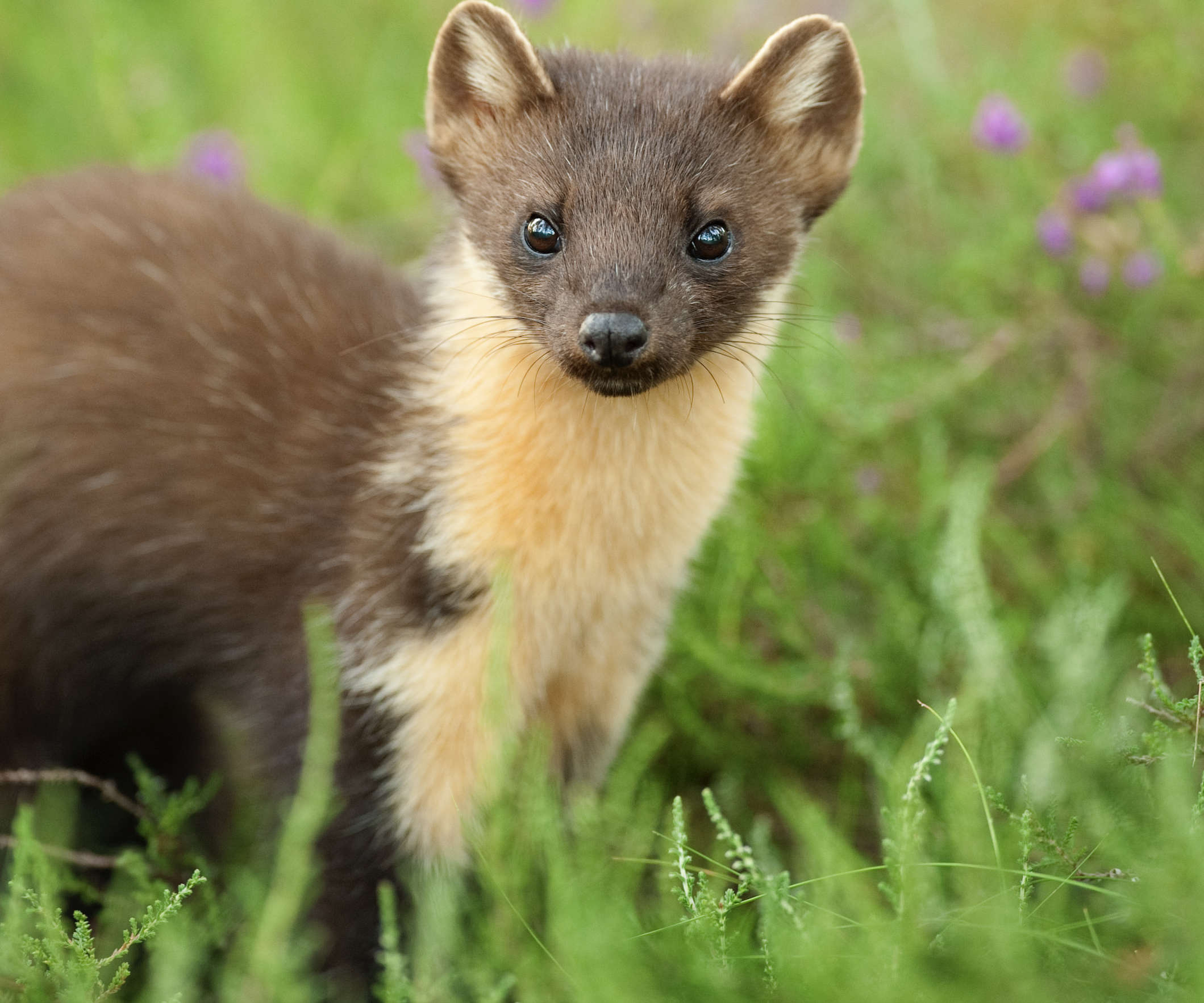
19 reintroduced to the National Park
A pioneering nature recovery project has reintroduced 19 pine martens to Exmoor National Park marking the official return of a native species lost for over a century.
Nine female and 10 male animals were released during September at secret locations owned by the National Trust and Exmoor National Park Authority. The releases mark the return of an animal which was once common locally, but which was lost due to hunting and the decline of its favoured woodland habitat.
Pine martens are a native species and a woodland dwelling animal. The size of a small cat, they belong to the weasel or mustelid family. Their release is the work of the Two Moors Pine Marten Project and supported by The National Lottery Heritage Fund.
The project is led by the charity Devon Wildlife Trust and is a partnership between seven organisations: Dartmoor National Park Authority, Devon Wildlife Trust, Exmoor National Park Authority, Forestry England, National Trust, Somerset Wildlife Trust and Woodland Trust. Expert assistance has been provided by the Vincent Wildlife Trust.
The pine martens were sourced from healthy wild populations in the Highlands of Scotland. The reintroduction of pine martens has been licensed by both NatureScot and Natural England. Although sporadic sightings have been reported of pine martens in Exmoor over recent years, this reintroduction is the first to be planned and officially licensed.
The reintroduction marks the culmination of 7 years of planning by the Two Moors Pine Marten Project working with local volunteers, stakeholders and communities. After undergoing careful health checks in Scotland, the pine martens were driven more than 500 miles through the night in a specially adapted, temperature-controlled vehicle. Altogether staff undertook five carefully planned journeys, each one bringing a small number of pine martens with them.
On arrival in Exmoor the pine martens were housed separately in specially constructed release pens, each containing a snug den box. There they were allowed to acclimatise quietly to their new surroundings while being provided with fresh food and water. After 3 days the door to each pen was opened and the pine martens were able to slip into their new wild surroundings in a series of magical moments captured on remote video cameras.
Each pine marten has been fitted with a radio collar allowing project staff to follow their fortunes in coming months. The lightweight handmade leather collars are designed to drop off the animals after 6-9 months.
The release of pine martens on Exmoor follows a similar successful reintroduction of 15 animals by the Two Moors Pine Marten Project on Dartmoor in autumn 2024.
In the 12 months since, the Dartmoor population has become established with the first births of kits being recorded in July 2025.
Similar successful releases have also taken place in recent years in the Forest of Dean, Wales and Cumbria. The expectation is that the Dartmoor and Exmoor pine marten populations will expand gradually in coming years, eventually merging to re-establish a stable population in the South West of England signalling positive steps towards returning the native species to its former range.
Pine martens are solitary animals and live at low density, preferring to form territories in and around woodlands. They are mainly nocturnal and are shy, avoiding contact with humans.
The return of pine martens to Exmoor was deliberately timed so that the animals could take advantage of the local abundance of wild autumn fruits.
Pine martens have a varied diet and at this time of year will consume wild fruits, along with hunting for prey which includes small mammals such as voles, mice and grey squirrels.
Devon Wildlife Trust’s Tracey Hamston leads the Two Moors Pine Marten Project. Tracey said: “It’s wonderful to see pine martens living wild in Exmoor again.
These animals were once a key part of our thriving woodland wildlife, so it’s good that they are back where they belong. It’s a positive sign that nature can be restored. Our woodlands and their wildlife will benefit from their presence.”
 Young teenager stabbed in Plymouth
Young teenager stabbed in Plymouth
 Stalking suspect sought
Stalking suspect sought
 Plymouth will not delay local elections
Plymouth will not delay local elections
 'Quarry dust' sparks worries in Kingsteignton
'Quarry dust' sparks worries in Kingsteignton
 2025 set to smash UK heat records
2025 set to smash UK heat records
 Man interviewed by council officials amid flag war
Man interviewed by council officials amid flag war
